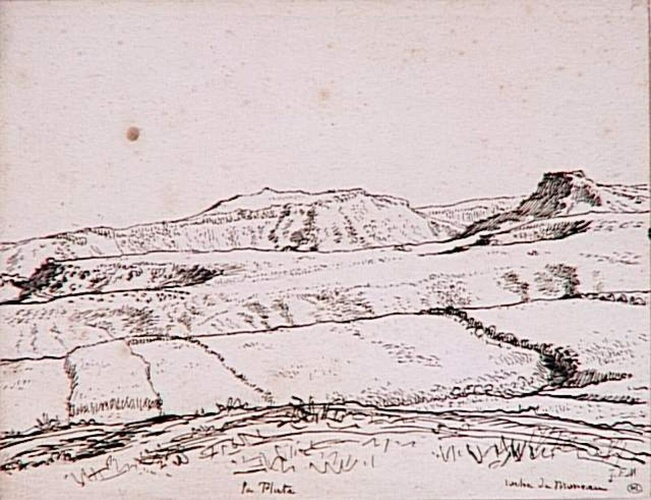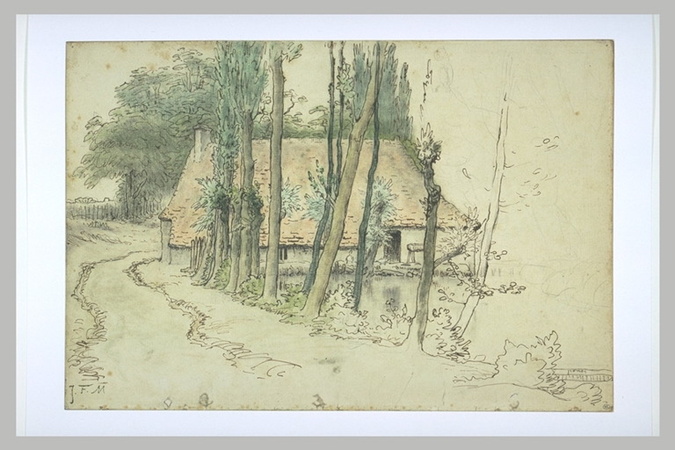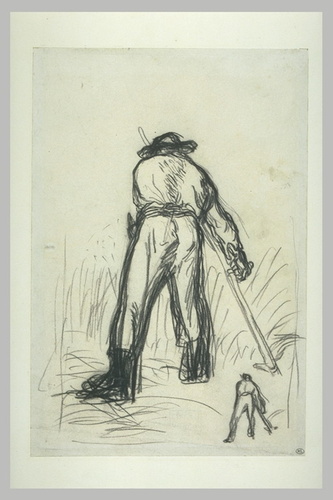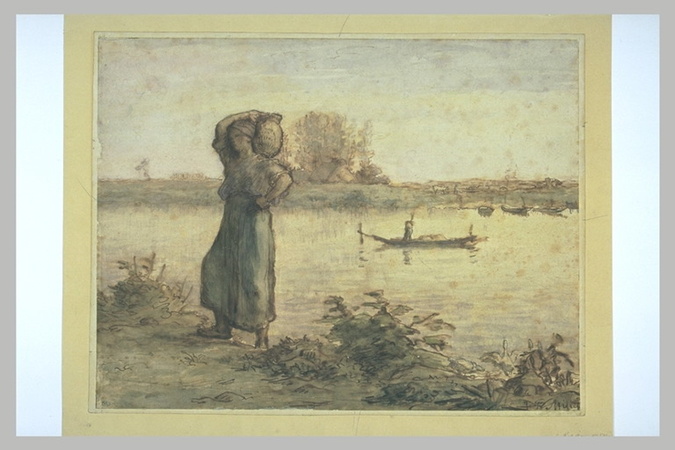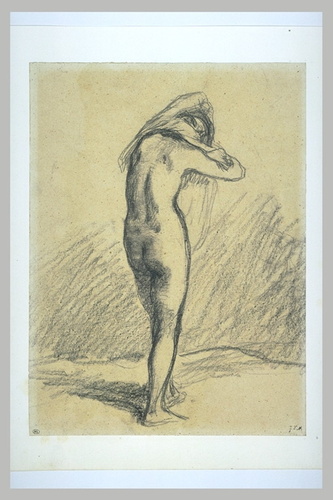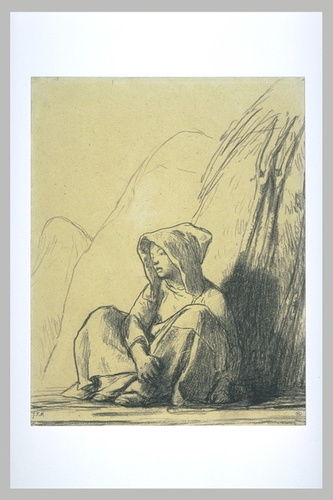Le Printemps
This painting was part of a cycle of the seasons that Millet worked on during the final years of his life. It was commissioned by Frédéric Hartmann, a patron of Théodore Rousseau, in March 1868. Millet worked on it intermittently until his death, completing Spring in May 1873, Summer and Autumn in 1874, but leaving Winter unfinished. Spring is firstly a landscape painting, a genre that Millet embraced more after 1865. He reduces the presence of man to the minute figure of a peasant in the centre under the trees, presenting an expression of a meeting, a dialogue between man and nature that is both lyrical and poetic. Nature is accurately observed, with the small flowers scattered along the roadside. Here the natural world is lived in and cared for. An orchard has been planted, a road has been laid, a fence built (protection against the untamed natural world glimpsed in the background). Everything here is symbolic: the storm clouds chasing across the sky, the dark lilac-brown earth, the bare, chopped branches of the trees suggest the passing of winter, whilst the blossom and bright raw green of the forest are signs of spring's renewal.
This is a classic theme – explored by Poussin, among others - but Millet handles the representation of nature with a deliberately expressive touch. The simplicity of the subject, and the feelings expressed by variations in the light, link Millet to the landscape tradition of his friend Rousseau, and beyond him to Constable and Ruysdaël, but through his astonishingly fresh colours, his way of capturing the moment, he comes closer to Monet, Bazille or Renoir who used to spend time in the Forest of Fontainebleau at this time, before the name Impressionist had been applied to them.

